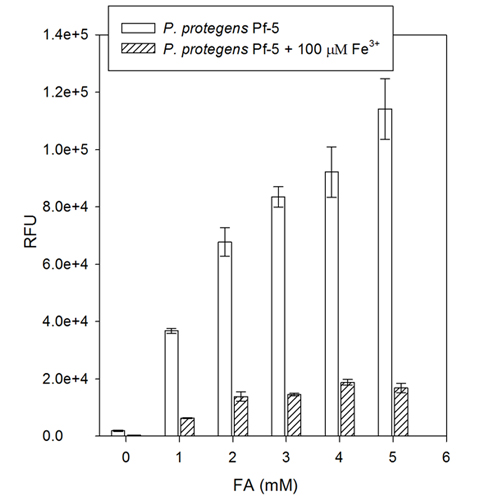Production of Siderophores Increases Resistance to Fusaric Acid in Pseudomonas protegens Pf-5
08-Jan-2015
Fusaric acid is produced by pathogenic fungi of the genus Fusarium, and is toxic to plants and rhizobacteria. Many fluorescent pseudomonads can prevent wilt diseases caused by these fungi. This study was undertaken to evaluate the effect of fusaric acid on P. protegens Pf-5 and elucidate the mechanisms that enable the bacterium to survive in the presence of the mycotoxin. The results confirm that fusaric acid negatively affects growth and motility of P. protegens. Moreover, a notable increase in secretion of the siderophore pyoverdine was observed when P. protegens was grown in the presence of fusaric acid. Concomitantly, levels of enzymes involved in the biosynthesis of pyoverdine and enantio-pyochelin, the second siderophore encoded by P. protegens, increased markedly. Moreover, while similar levels of resistance to fusaric acid were observed for P. protegens mutants unable to synthesize either pyoverdine or enanto-pyochelin and the wild type strain, a double mutant unable to synthesize both kinds of siderophores showed a dramatically reduced resistance to this compound. This reduced resistance was not observed when this mutant was grown under conditions of iron excess. Spectrophotometric titrations revealed that fusaric acid binds not only Fe2+ and Fe3+, but also Zn2+, Mn2+ and Cu2+, with high affinity. Our results demonstrate that iron sequestration accounts at least in part for the deleterious effect of the mycotoxin on P. protegens.











